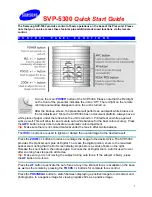
depth-of-field preview lever downwards until
it locks.
To reopen the diaphragm, depress the lower
part of the lever.
Pre-release and cable release
39
Considerable efforts have been made to reduce
camera vibrations caused by moving parts in
the exposure sequence. However, if you wish to
avoid these vibrations completely, you can pre-
release the mechanism by pushing the pre-re-
lease button upwards. This causes the following
sequence:
1. The mirror folds up
2. The shutter closes and remains closed
3. The diaphragm closes to its preset aperture
4. The auxiliary shutter opens
When you subsequently press the release but-
ton, only the shutter then operates at the preset
speed.
As shown in the illustration, you can also attach
a cable release to further reduce vibrations.
Double exposure
40
As the camera has been designed to prevent ac-
cidental double exposure you will have to carry
out the following procedure in order to make
multiple exposures on the same frame:
1. Depress the main release button and make
the initial exposure.
2. Insert the magazine slide and remove
the magazine.
3. Wind the camera with one full revolution of
the winding crank.
4. Replace the magazine and remove the slide.
The unit is now ready to make a second expo-
sure on the same frame. You can make addi-
tional exposures in the same manner.
Flash synchronization
41
The C series lenses have built-in leaf shutters
with speeds from 1s to 1/500s and B. Flash syn-
chronization occurs at full shutter opening via
the PC flash terminal. Suitable electronic flash
units can be used at all shutter speeds from 1s
-1/500s as well as B.
Please see under ‘Accessories’ the sections on the
use of a Hasselblad D-Flash 40 and a Hasselblad
Flash adapter SCA 390 with a 503CW.
Infrared photography
42
Infrared (IR) rays (wavelengths longer than
800 nm) form an image on a plane further away
from the lens than the image plane for visible
light. To compensate for this difference you
have to align the chosen distance against the
red IR index and not the normal central index.
Proceed as follows:
1. Focus as usual on the focusing screen.
2. Note the distance on the focusing scale that is
opposite the central index line.
3. Now rotate the focusing ring to set this dis-
tance opposite the red IR index line instead of
the central index line.
14















































